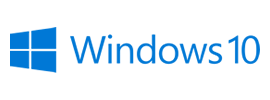Along the right side of the device
To the right side of the keyboard, along the edge of the device, you’ll find a number of sockets.
Working from the back to the front of the device, the first is the power socket. Simply connect the barrel shaped power adapter to this socket to charge the device.
Beside the power socket is a battery light. It’ll shine white when the battery charge exceeds 90%. It’ll shine amber when the charge is 90% or less. It’ll be off when the battery is not charging, and it will flash orange when the battery is low and needs charging if data loss is to be avoided.

Next is a USB port, like the one on the left side of the device.
Then there is an HDMI socket to allow the device to be connected to video and/or audio equipment, such as a high definition television or projector.
There are then two USB Type-C sockets, for connecting the device to equipment for rapid data transfer and/or charge. You would use either of these two sockets in the office to connect your device to your monitors. While connected to the monitors, this connection will also charge your device's battery, so there's no need to use the power socket.
Next there is a 3.5mm audio-in/out combination socket, which could be used with compatible headphones etc.
The next opening is a security cable slot to help physically secure the device to a desk or heavy object.
Towards the front of the device, is a SIM card slot.
Looking just below the keyboard, to the right, is a fingerprint reader. This can be used in conjunction with Windows Hello to sign-in to Windows 10 using just your fingerprint - much like many smartphones and tablet devices.






